Buried beneath the Naica Mountains in the Chihuahua Desert lies the largest crystal cave ever known.
In the 18th century, silver was highly valued in Mexico, and the Naica mine was discovered when miners were searching for silver. Later, in the early 20th century, large-scale mining operations began to emerge. The crystal cave was discovered just before the Naica mine officially closed in 1911. Due to its naturally visible location, local residents wanted to keep it safe from destruction and external influences, leading the Mexican government to protect it.
However, it wasn’t until 2000 that two miner brothers, Juan and Pedro Sanchez, rediscovered the crystal cave while searching for new ore deposits for the mining company Industrias Peñoles in the Sierra de Naica in Chihuahua, Mexico. The sight before them was breathtaking, filled with enormous milk-white selenite crystals towering all around, rising sharply from the ceiling, floor, and walls. Hundreds of giant sparkling crystals were present, some over 11 meters tall and weighing up to 55 tons.
This mining area is now known as “Cueva de Los Cristales” or the Crystal Cave. Scientists estimate that the crystal formations began developing around half a million years ago and continue to grow every day. They formed as a result of the interaction between magma and water flowing within the cave.

Scientists cannot predict how large the crystals will grow in the future. (Photo: Carsten Peter/National Geographic).
With humidity levels at 100% and temperatures around 58 degrees Celsius, anyone entering the cave must wear special cooling suits and limit their exploration time to just 45 minutes. The Crystal Cave is currently closed to tourists, as mining operations have ceased, and water has flooded the interior. The environment inside is gradually returning to its original state, allowing the crystals to continue growing.
This cave has always been a significant attraction for exploring scientists, especially since the consistently high temperatures make exploration even more challenging. Nevertheless, geology enthusiasts can still see some of these crystals up close.
The following images capture the fascinating journey of scientists exploring this mysterious cave. Photos from National Geographic.
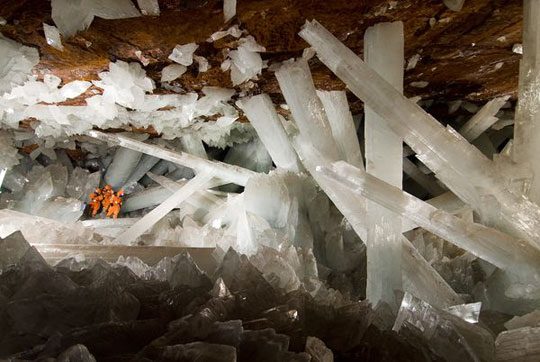
In their orange cooling suits, scientists delve 300 meters underground into the heart of the crystal cave.

Crystals forming 150 meters underground resemble tiny cauliflower flowers.
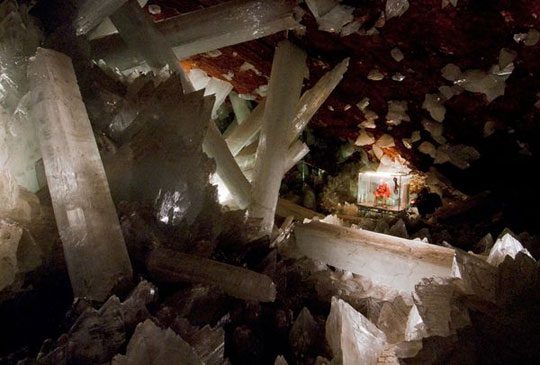
An explorer is seen in a cold air chamber to escape the heat of this beautiful cave. The temperature often exceeds 50 degrees Celsius, with humidity levels between 90% and 100%, making research very challenging.
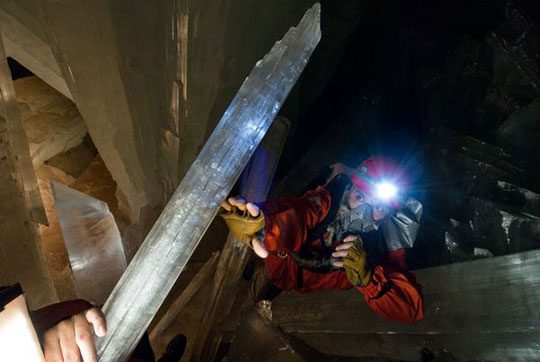
Columns of CaSO4 crystals resemble shimmering silver swords.

Images of fragile small crystals in the newly discovered caves.
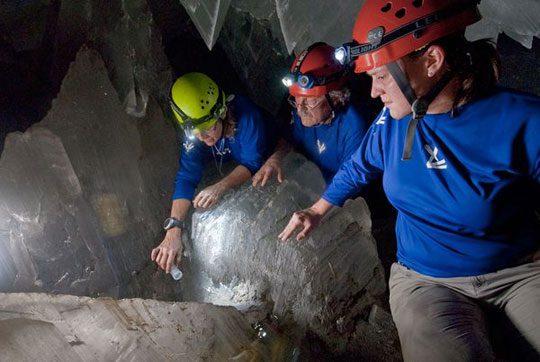
Scientists studying the Crystal Cave. Analyses show that there are over 200 million species of viruses in a single drop of water from this cave.

Scientists must wear a cooling device weighing about 25 kilograms for periods of 15 minutes to an hour.
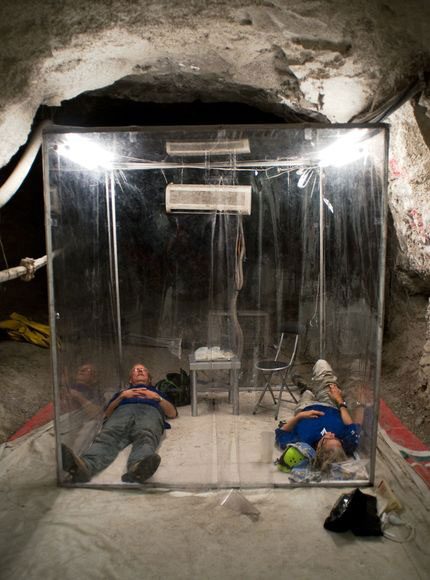
Scientists take a break in a glass chamber cooled from outside the cave. With temperatures above 50 degrees Celsius and humidity levels of 90% to 100%, the Crystal Cave could be fatal within 30 minutes without proper cooling equipment.
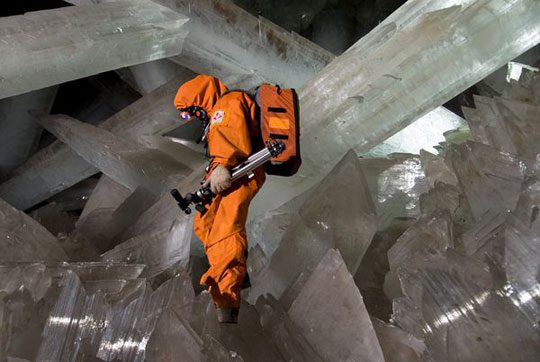
Images of the giant crystal columns inside the cave.

A scientist examines a crystal fragment within the cave.

Hundreds of giant CaSO4 columns create a dazzling layer of crystal formations in the cave.
The main mineral found in the cave is selenite, a type of gypsum (CaSO4.2H2O) that is transparent and colorless, despite calcium sulfate being abundant in the cave’s water. Calcium sulfate can form various minerals.
Legends say that selenite crystals have healing properties and can make those who touch them younger. Selenite is named after the Greek goddess of the moon, symbolizing good fortune for everyone. This is also why the magnificent crystal cave is considered a dangerous yet wondrous destination.




















































